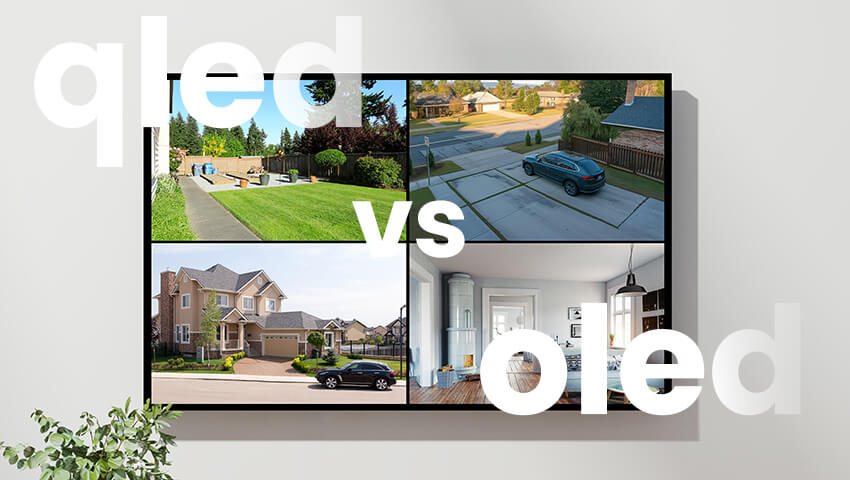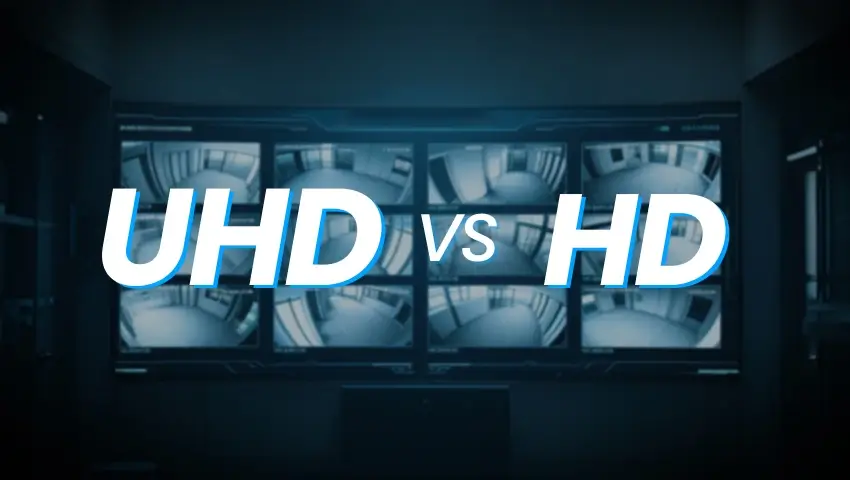When selecting a security camera system, the display technology plays a crucial role in determining image quality, visibility, and overall performance. Two of the most advanced display technologies – QLED (Quantum Dot LED) and OLED (Organic LED) – offer distinct advantages for surveillance applications. This article explores their key differences, practical applications, and which type of user each technology suits best.
Contents
Understanding QLED and OLED in Security Systems
QLED: Brightness and Durability
QLED technology enhances traditional LED/LCD displays with quantum dots – nanoparticles that produce purer colors and higher brightness. This makes QLED particularly effective for:
①Outdoor surveillance: With high peak brightness exceeding 1000 nits, QLED ensures clear visibility even in direct sunlight.
②Long-term monitoring: The inorganic nature of quantum dots reduces display degradation over time compared to OLED.
③Cost-effective solutions: More affordable than OLED while still delivering vibrant colors.
Best for: Businesses or homeowners needing reliable daytime monitoring with budget-friendly setups.
OLED: Superior Contrast and Low-Light Performance
OLED displays use self-emissive pixels, meaning each pixel generates its own light. This enables:
①True blacks and infinite contrast: Essential for spotting details in shadows or nighttime footage.
②Faster response times: Reduces motion blur in high-speed tracking scenarios.
③Flexible screen designs: OLED panels can be ultra-thin or curved for specialized installations.
However, OLED has drawbacks:
①Risk of burn-in: Static security feed elements like timestamps may cause permanent image retention.
②Higher cost: Typically 20-30% more expensive than QLED options.
Best for: High-end security operations where image precision is critical, such as law enforcement or luxury estate monitoring.
Detailed Technology Comparison
Brightness Performance:
QLED displays excel with brightness levels of 1000+ nits, making them ideal for well-lit environments. OLED displays offer good brightness in the 500-800 nit range but can’t match QLED’s peak luminance.
Black Level Reproduction:
OLED provides perfect black levels since individual pixels can turn off completely, while QLED displays may show some backlight bleed due to their LCD backlighting system.
Viewing Angles:
Both technologies offer wide viewing angles, with QLED covering 160-178 degrees and OLED typically exceeding 170 degrees for minimal color shift when viewed off-center.
Lifespan:
QLED displays generally last longer with 60,000+ hours of operation, compared to OLED’s 30,000-50,000 hour lifespan before noticeable degradation.
Energy Efficiency:
OLED is more energy efficient as it doesn’t require a separate backlight, while QLED maintains moderate efficiency despite its bright output.
Price Point:
QLED systems fall in the mid-range price category ($$), while OLED commands premium pricing ($$$) due to its more complex manufacturing process.
Technology Selection Guide
Choose QLED if you need:
①Reliable daytime monitoring with excellent sunlight visibility
②Cost-effective solutions for large-scale deployments
③Long-duration installations in environments like parking lots or warehouses
④Durable displays for continuous 24/7 operation
Opt for OLED if you require:
①Critical low-light performance for security analysis
②The highest possible image quality regardless of cost
③Flexible or curved display configurations
④Advanced monitoring stations for high-security facilities
Future Trends and Hybrid Solutions
Emerging technologies like QD-OLED, which combine quantum dots with OLED technology, may soon bridge the gap between these two standards. Currently, the choice depends on your specific surveillance requirements and budget constraints.
Professional Recommendation: For comprehensive coverage, consider pairing QLED cameras (for bright outdoor capture) with OLED monitoring stations (for detailed dark-area analysis). This hybrid approach leverages the strengths of both technologies.
For personalized advice, consult with security professionals who can assess your property’s lighting conditions and security risk profile to recommend the optimal display solution.

